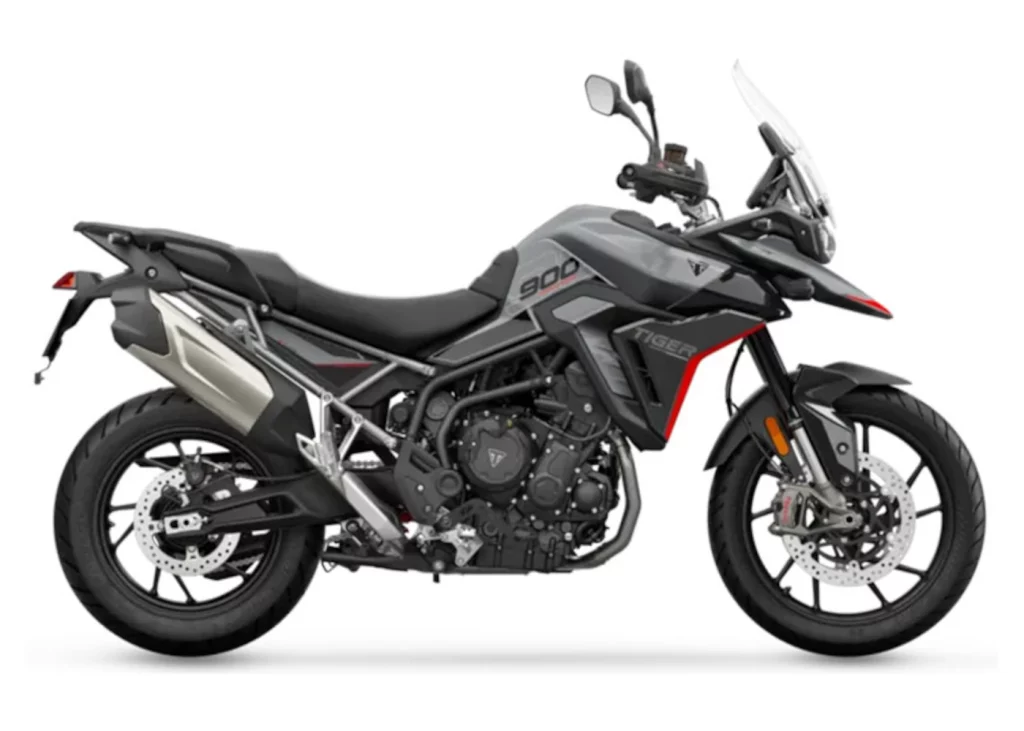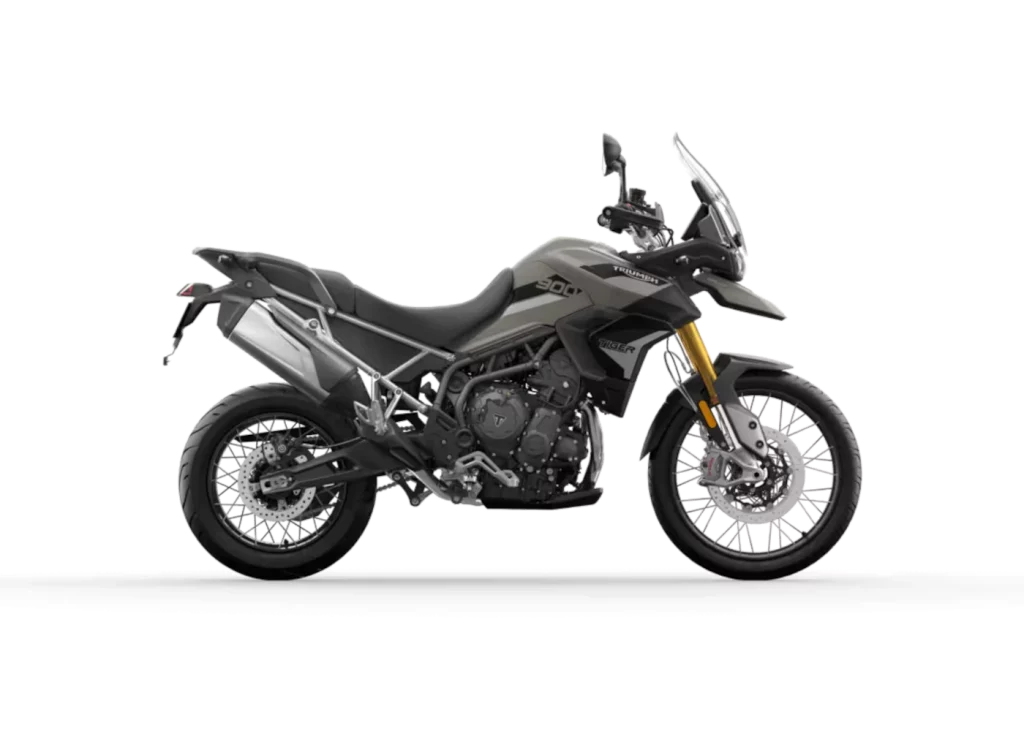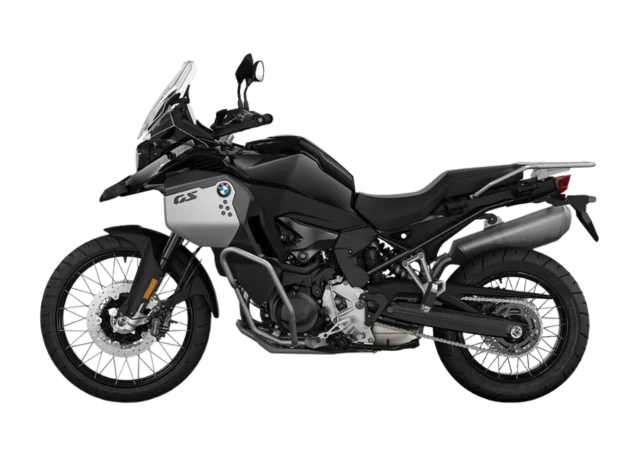PATAGONIA END OF THE EARTH ADVENTURE
Our Patagonia motorcycle tour takes you through the Andes to the most remote parts of Patagonia in Argentina and Chile. See Los Alerces National Park, Queulat National Park, Torres Del Paine National Park, Perito Moreno National Park and ride to the end of the earth – the southern tip of Tierra Del Fuego. Towns you will visit include San Carlos de Bariloche, Esquel, Coyhaique, Calafate, Ushuaia, and Punta Arenas. Along the way, see guanacos, gauchos and glaciers, all with the backdrop of the picturesque Andes Mountain Range.
March 10 - March 26, 2026
February 28 - March 16, 2027
Available Motorcycles




THE ITINERARY
DAY 1 - Arrival in Osorno, Chile
We will arrange your transfer to our hotel in Osorno. Welcome dinner this evening and meet the rest of the group. Stay in Osorno, Chile.

Day 2 - Osorno, Chile to San Carlos de Bariloche, Argentina (151 miles/244 km)
You may not have thought the ride would stop at the second-largest collection in the world of Studebakers, but hey, this is travel. Amazing views appear right away as you ride directly into the Andes. Continue to the summer recreational outdoors hub of San Carlos de Bariloche, Argentina. Bariloche is known as the "Switzerland of the Andes," with many residents immigrating from the old country. Because of this heritage, Bariloche is particularly known for its chocolate, which can be found on every street corner. Stay in San Carlos de Bariloche.

DAY 3 - Bariloche, Argentina to Esquel, Argentina (196 miles/316 km)
Ride south, through the Andes mountain range and enjoy excellent paved motoring. Pass numerous rivers and lakes on your motorcycle as you make your way to the town of Esquel. As an option, ride an alternative dirt route through the Alerces National Park, home to the world's oldest trees. Stay in Esquel.

DAY 4 - Esquel, Argentina to Puyuhuapi, Chile (164 miles/264 km)
Cross back into Chile and continue along the Carretera Austral highway south. The highway is a dirt road, and the scenery is fantastic: mountains, large rivers and glaciers can be seen along the way. Ride through the river-rafting mecca of Futaleufu. Arrive on a protected bay on the Pacific Ocean at the small fishing town of Puyuhuapi. Stay in Puyuhuapi.

DAY 5 - Puyuhuapi, Chile to Coyhaique, Chile (145 miles/234 km)
Ride through Jurassic Queulat National Park on your way to Coyhaique. Queulat receives the most rain in Chile and therefore the plants in this region are like that in the Land of the Lost. Keep your eye out for cascading waterfalls from the snowpack high above. The Carratera Austral at this point is a simple dirt road, winding past remote ranches, tall mountains, clear rivers and forests. Arrive in Coyhaique, known for its cattle ranches and fly fishing. Stay in Coyhaique.

DAY 6 - Coyhaique, Chile to Puerto Guadal, Chile (169 miles/273 km)
Feel yourself distancing from civilization and entering pure wilderness this day. You will pass numerous ranches, rugged mountains, milky glacier rivers and large lakes. Keep an eye out for glaciers hanging high above you. You will also be riding along large freshwater lakes, the proportions of which will make you go "Gulp!" Stay in the Puerto Guadal area.

DAY 7 - Puerto Guadal, Chile to Estancia La Angostura, Argentina (330 miles/532 km)
Cross into Argentina again today. This is truly off the beaten path. Experience solitude in the Andes. Keep your eyes out for guanacos, flamingos, fox and condors. Ride the dry Argentinian Patagonia on Route 40 and experience a vast, windswept plane. Stay at a functioning Estancia in the heart of Patagonia.

DAY 8 - Estancia La Angostura, Argentina to Calafate, Argentina (208 miles/336 km)
The motorcycle adventure continues south through the vast Patagonia. Marvel at Mt. Fitzroy and the Andes in the distance. Stay in Calafate, Argentina.

DAY 9 - Free day in Calafate (up to 100 miles/160 km)
Ride out to the famous Perito Moreno Glacier. Watch condors cruise the face of the glacier as it calves into the lake. Explore around Calafate. Stay in Calafate, Argentina.

DAY 10 - Calafate, Argentina to Torres del Paine, Chile (170 miles/272 km)
Ride along the distant Andes south until crossing over into Chile near Torres Del Paine National Park. Stay in the Torres Del Paine National Park area at a remote estancia, located along a rock cliff which is home to condors.

DAY 11 - Free day, Torres del Paine, Chile (up to 160 miles/257 km)
Explore Torres Del Paine National Park with its towering granite spires. Keep your eye out for condors and guanacos. The scenery is absolutely breathtaking! Stay near the Park.

DAY 12 - Torres del Paine, Chile to Cerro Sombrero, Chile (222 miles/358 km)
Encounter the "roaring 40s" - the place where the wind picks up. The Andes taper off as you ride along the Straits of Magellan. Cross the Straits of Magellan by ferry to Tierra Del Fuego! Stay in Cerro Sombrero.

DAY 13 - Cerro Sombrero, Chile to Ushuaia, Argentina (315 miles/507 km)
The Andes rise one more time during this breathtaking day. Ride to the end of the Earth to Ushuaia, Argentina. Fresh ocean air and scenic mountains make this outpost unforgettable. Stay in Ushuaia, Argentina.

DAY 14 - Free day, Ushuaia, Argentina (up to 100 miles/160 km)
This is the day you will ride to the end of Route 3 – and the end of the earth! Ride around Ushuaia. Ride up to the local ski resort and enjoy the panoramic view of the harbor, Beagle Channel and the last islands until Antarctica. Stay in Ushuaia, Argentina.

DAY 15 - Ushuaia, Argentina to Río Grande, Argentina (131 miles/211 km)
On your way back to Rio Grande, stop and take a boat out to a penguin colony as an optional tour. Stay in Rio Grande, Argentina.

DAY 16 - Rio Grande, Argentina to Punta Arenas, Chile (262 miles/423 km)
The last day of the motorcycle tour features a ride to the north side of Tierra Del Fuego and across the Straits of Magellan once again. Ride along the straights to Punta Arenas, Chile. Farewell dinner this evening. Stay in Punta Arenas, Chile.

DAY 17 Departure (?)
Fly home, or keep the dream alive (unknown miles).
THE GEAR TO BRING
MotoQuest guides wear KLIM helmets, jackets, pants and gloves, and we outfit our motorcycles with luggage and accessories from Revzilla. You can view and download our complete MotoQuest packing list here.
ROAD CONDITIONS:
This challenging motorcycle tour features 40% dirt surfaces with windy conditions some days.
Included with the tour:
Hotel Accommodations
Premiere Welcome and Farewell Dinners
Professional MotoQuest Guide(s)
Support Vehicle
Support Vehicle Driver
Staff Trained in First Aid with Satellite Phone
MotoQuest Swag Bag
Photos Taken on the Trip
Automatic Enrollment in Global Rescue
Not Included:
Airfare
Meals on the Road
Gas
Alcohol
Alternative Tours
Travel Insurance
Gratuities
National Park Entrance Fees
MotoQuest Staff on Tour:
Landmarks And Attractions
Bariloche is a charming city nestled in the picturesque region of Northern Patagonia, Argentina. Bariloche, officially known as San Carlos de Bariloche, is renowned for its stunning natural beauty, outdoor activities, and Swiss-inspired architecture.
Bariloche is situated on the shores of Lake Nahuel Huapi, one of the many breathtaking lakes in the area. The city is surrounded by snow-capped mountains, lush forests, and pristine landscapes, making it a paradise for nature lovers and outdoor enthusiasts.
The city itself is known for its unique architectural style, influenced by the Swiss settlers who arrived in the early 20th century. The charming alpine-style buildings, complete with wooden chalets and sloping roofs, add to the city’s distinctive character.
Bariloche is a popular destination for adventure seekers, offering a wide range of activities throughout the year. In the winter months, visitors can enjoy skiing and snowboarding in the nearby Cerro Catedral ski resort, which boasts excellent slopes and stunning panoramic views. During the warmer months, Bariloche becomes a haven for hiking, mountain biking, fishing, and water sports.
The surrounding national parks, such as Nahuel Huapi National Park, provide ample opportunities for exploration and immersing oneself in the region’s natural wonders. Bariloche is also famous for its delectable chocolate and regional cuisine. The city is dotted with numerous chocolate shops and cafes, where you can indulge in delicious treats and warm beverages.
Don’t miss the chance to try the local specialty, “chocolate con churros,” a delightful combination of hot chocolate and fried dough pastries. Additionally, Bariloche is a gateway to the scenic Seven Lakes Route, a breathtaking drive that takes you through a series of stunning lakes and charming towns in the region.
The Carretera Austral is a legendary road that winds its way through the remote and rugged landscapes of Chilean Patagonia. The Carretera Austral, also known as Route 7, is a scenic highway that stretches over 1,200 kilometers from Puerto Montt to Villa O’Higgins.
This iconic road offers intrepid travelers a chance to immerse themselves in the untouched beauty of Patagonia. As you journey along the Carretera Austral, you’ll encounter breathtaking fjords, towering mountains, dense forests, and pristine rivers. The road itself can be challenging at times, with gravel sections and narrow stretches, but the rewards are truly worth it.
The Carretera Austral is a haven for outdoor enthusiasts and nature lovers. Along the way, you’ll find numerous opportunities for hiking, camping, fishing, kayaking, and wildlife spotting. The region is home to stunning national parks, such as Queulat National Park with its hanging glacier, and Cerro Castillo National Park with its jagged peaks and turquoise lakes.
As you traverse the Carretera Austral, you’ll also come across charming towns and villages that offer a glimpse into the local way of life. Puerto Tranquilo is known for its mesmerizing Marble Caves, formed by the erosion of the General Carrera Lake. Coyhaique, the largest city along the route, serves as a hub for supplies and services.
It’s important to note that due to the remote nature of the Carretera Austral, services and accommodations may be limited in certain areas. It’s advisable to plan and prepare accordingly, ensuring you have enough fuel, supplies, and a reliable vehicle for the journey.
Ruta 40 is a legendary highway that stretches along the spine of Argentina, traversing the vast and diverse landscapes of this beautiful country. Ruta 40, also known as National Route 40, is one of the longest highways in the world, spanning over 5,000 kilometers from the northern border with Bolivia to the southern tip of Patagonia.
This iconic road offers travelers a chance to embark on an epic journey through Argentina’s varied terrain. As you travel along Ruta 40, you’ll witness the breathtaking beauty of the Andes Mountains, vast deserts, fertile valleys, shimmering lakes, and charming towns. The route passes through numerous national parks and natural wonders, providing ample opportunities for outdoor adventures.
From the stunning landscapes of Quebrada de Humahuaca in the north to the awe-inspiring Perito Moreno Glacier in the south, Ruta 40 showcases the incredible natural diversity of Argentina. Along the way, you’ll encounter charming towns and villages that offer a glimpse into the local culture and traditions.
Cafayate, known for its vineyards and delicious wines, is a popular stop for wine enthusiasts. El Chaltén, nestled in the heart of Patagonia, is a gateway to the majestic peaks of Fitz Roy and Cerro Torre. It’s important to note that Ruta 40 is a long and challenging road, with sections that are unpaved and remote.
Services and accommodations may be limited in certain areas, so it’s advisable to plan and prepare accordingly. It’s also recommended to have a reliable vehicle, sufficient fuel, and supplies for the journey.
The magnificent Perito Moreno Glacier is a true marvel of nature located in the southern region of Argentina, specifically in Los Glaciares National Park. This glacier is renowned for its immense size, stunning beauty, and captivating displays of ice.
Perito Moreno Glacier is one of the few glaciers in the world that is still advancing, meaning it is growing rather than retreating. It spans an impressive area of about 250 square kilometers and reaches a height of around 60 meters above the surface of Lake Argentino.
What makes Perito Moreno Glacier truly remarkable is its dynamic nature. Visitors have the opportunity to witness the glacier’s constant movement and hear the thunderous roars as massive chunks of ice break off and crash into the lake below. This phenomenon, known as calving, creates a mesmerizing spectacle that is both awe-inspiring and humbling. The glacier is easily accessible, with well-maintained walkways and viewing platforms that allow visitors to get up close and personal with this natural wonder. You can witness the vibrant blue hues of the ice, feel the crisp air, and listen to the echoes of the glacier as it continues its slow but steady advance.
For those seeking a more adventurous experience, guided ice trekking tours are available, allowing you to strap on crampons and explore the glacier’s icy surface accompanied by experienced guides.
Perito Moreno Glacier is not only a sight to behold but also an important scientific and environmental landmark. Its preservation and conservation efforts contribute to the understanding and protection of these fragile ecosystems.
Torres del Paine National Park is a true gem of Patagonia, located in the southern region of Chile. This park is renowned for its breathtaking landscapes, towering granite peaks, pristine lakes, and diverse wildlife. It is a haven for outdoor enthusiasts and nature lovers alike. Torres del Paine National Park is home to the iconic “Torres,” or towers, which are three granite peaks that rise dramatically from the surrounding landscape.
These majestic towers are a sight to behold and attract hikers and climbers from around the world. The park offers a variety of hiking trails, ranging from easy walks to challenging multi-day treks. The most famous trek is the “W Circuit,” which takes you through some of the park’s most stunning scenery, including the Grey Glacier, the French Valley, and, of course, the iconic Torres themselves.
As you explore the park, you’ll encounter pristine lakes, such as Lake Pehoé and Lake Nordenskjöld, which reflect the surrounding mountains and create a picturesque setting. The park is also home to numerous glaciers, including the Grey Glacier, which stretches for miles and offers a mesmerizing display of ice formations. Wildlife enthusiasts will be delighted by the diverse fauna that inhabits the park.
You may spot guanacos, a relative of the llama, grazing in the grasslands, or catch a glimpse of the elusive puma, which roams the park’s rugged terrain. The park is also home to a variety of bird species, including the majestic Andean condor.
Accommodations within the park range from camping sites to luxury lodges, allowing visitors to immerse themselves in the natural beauty of the surroundings. It’s important to note that the park is subject to strict conservation regulations to preserve its pristine environment..

